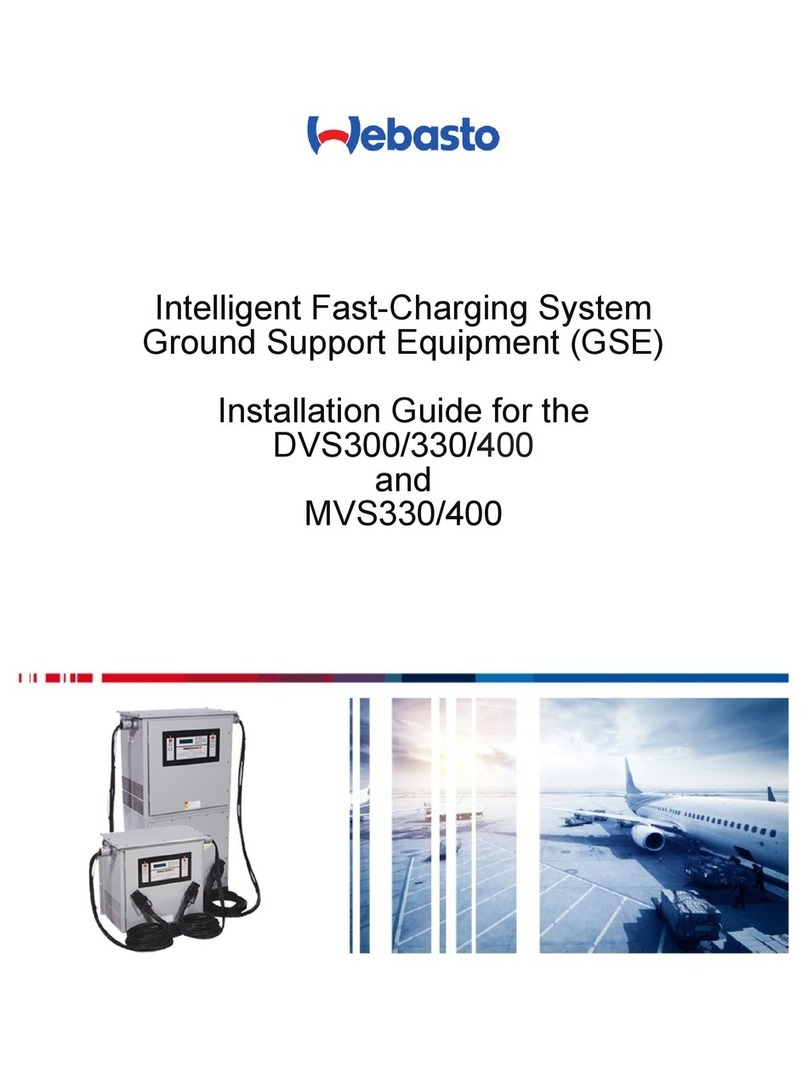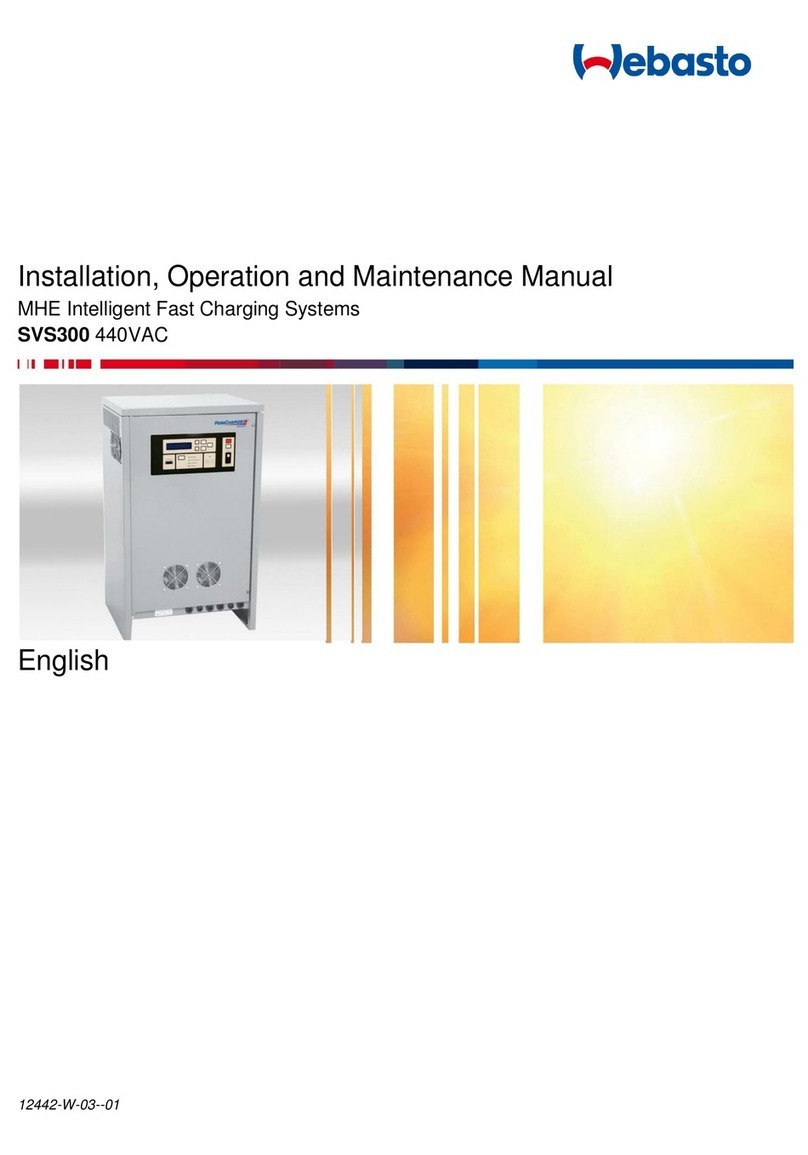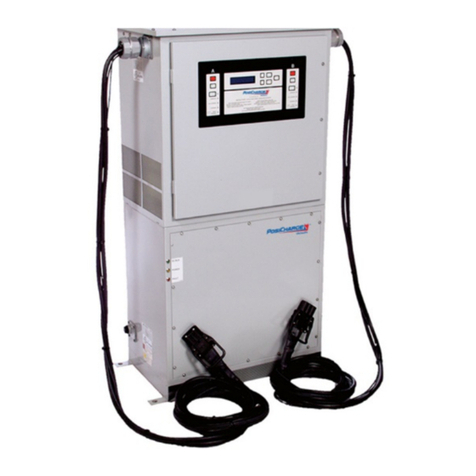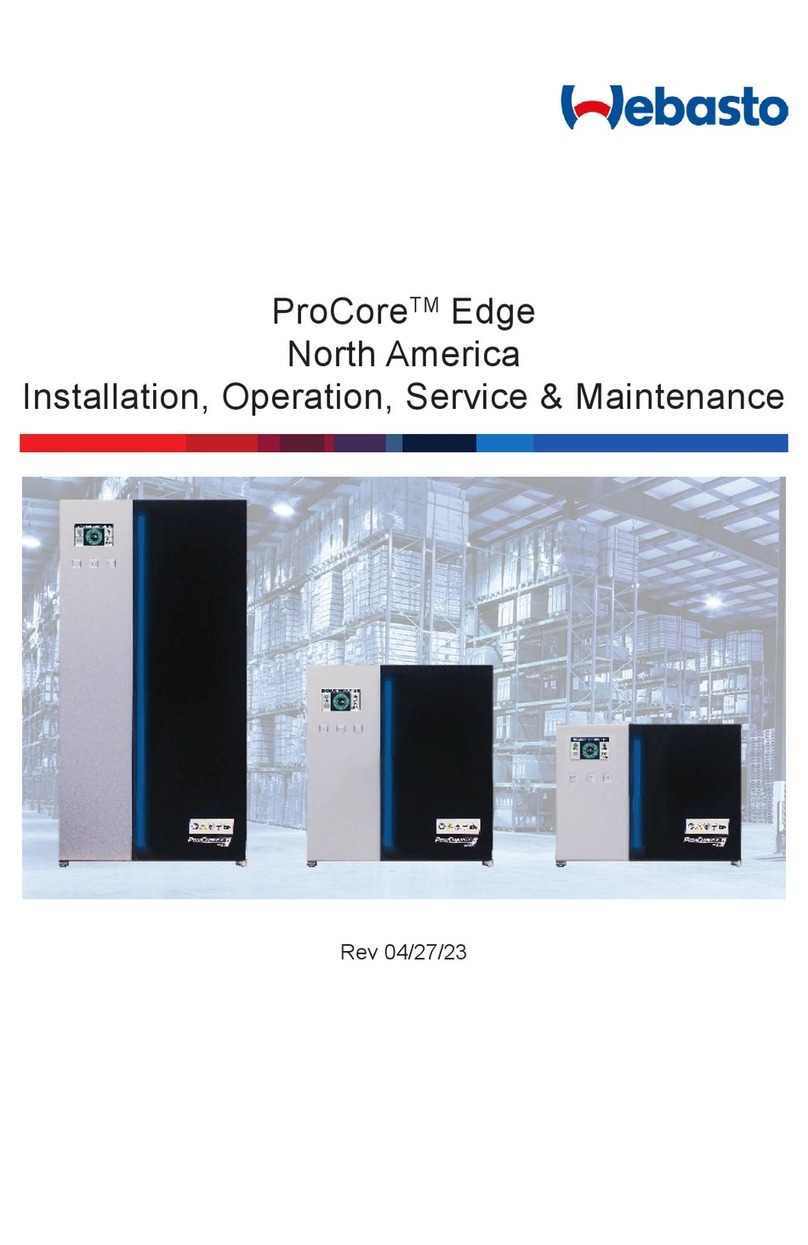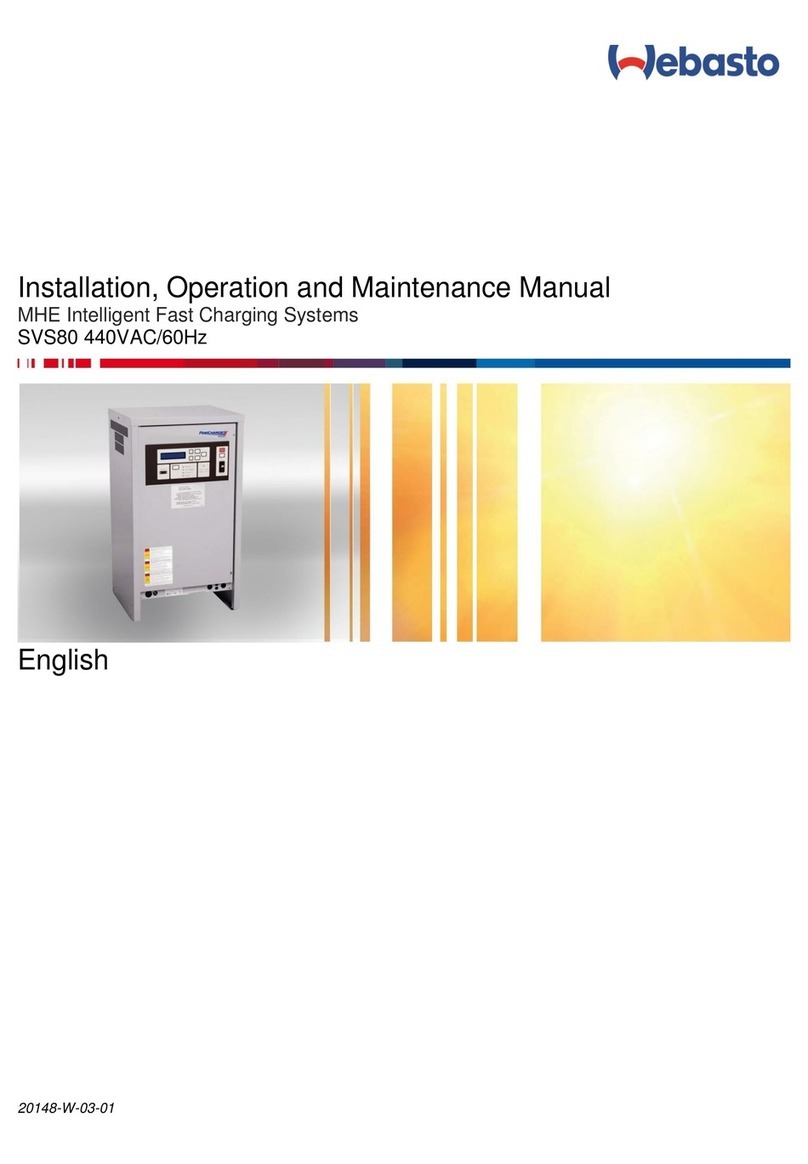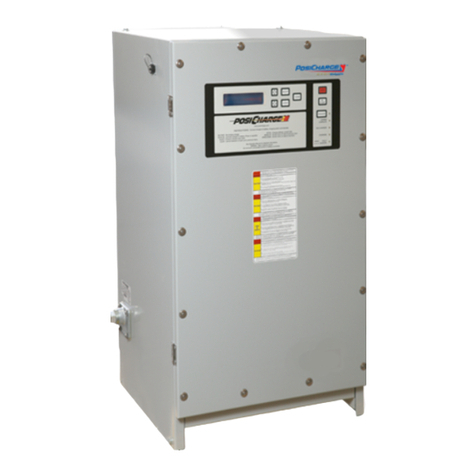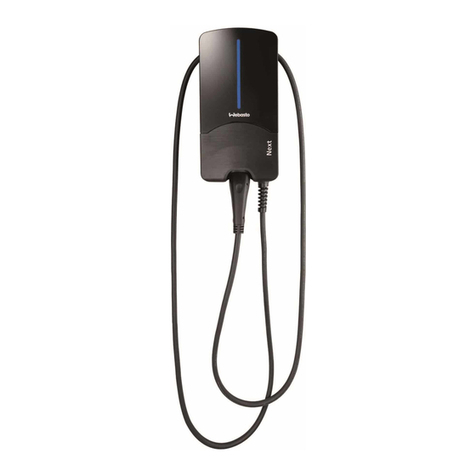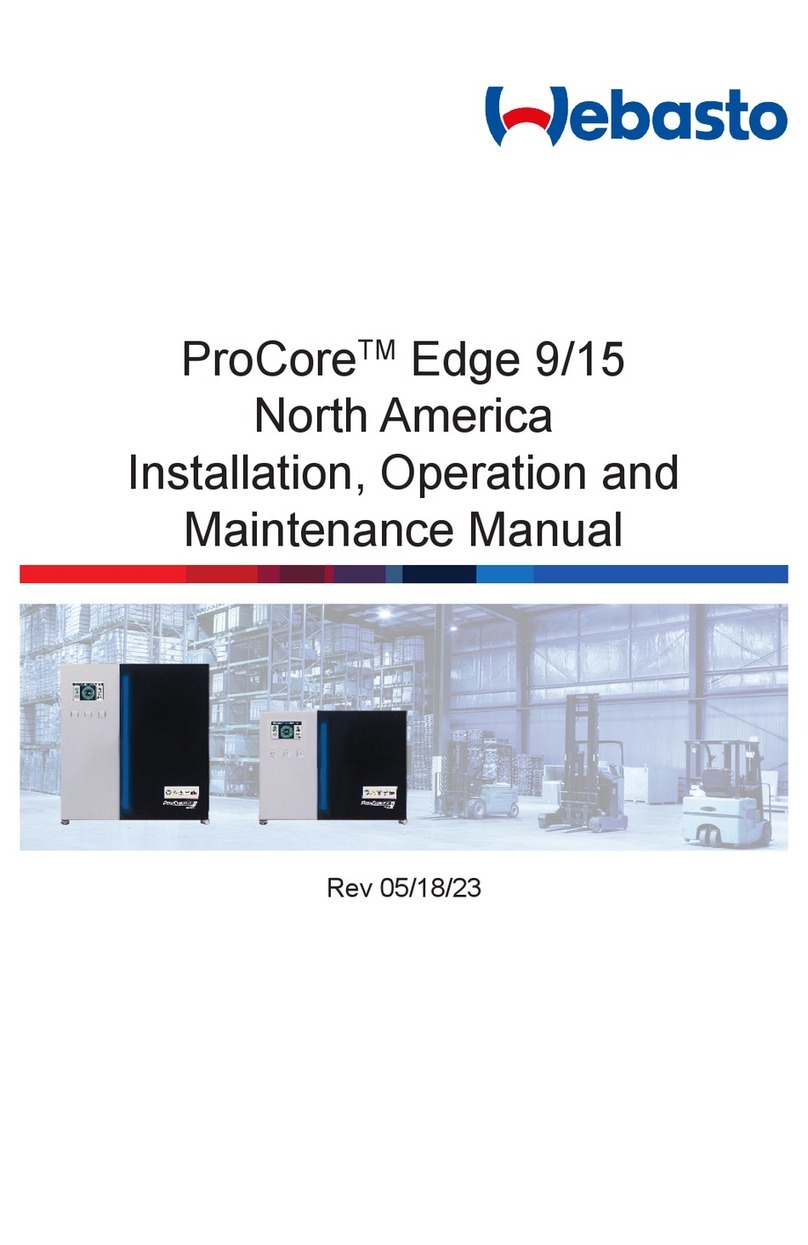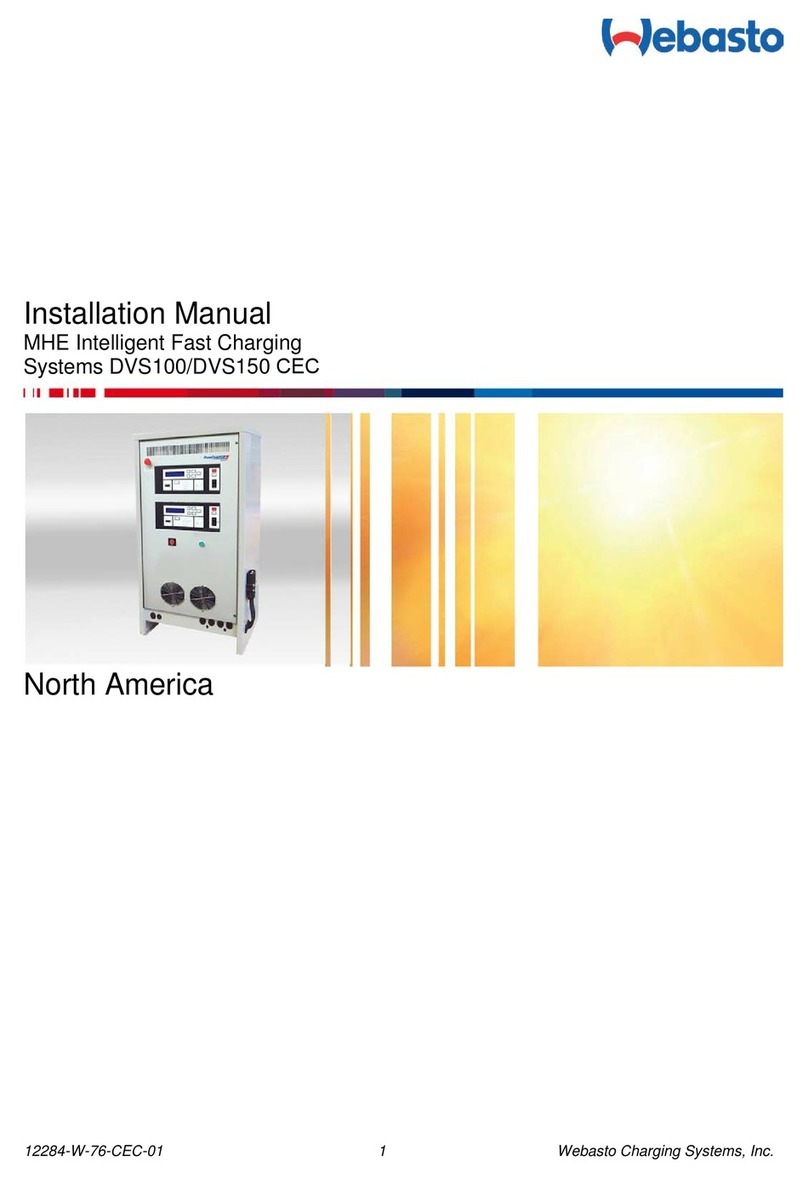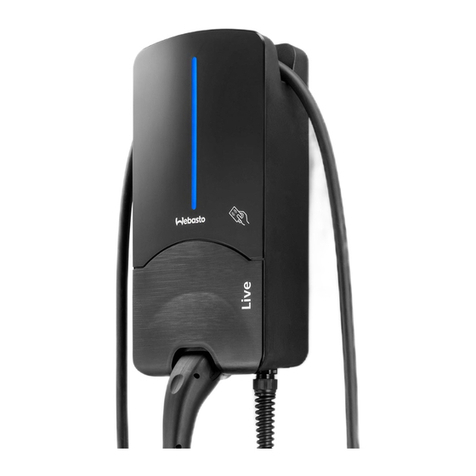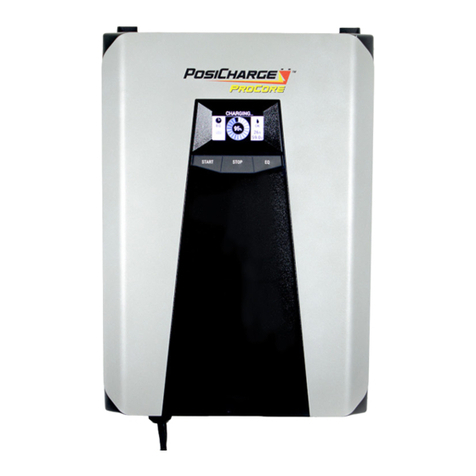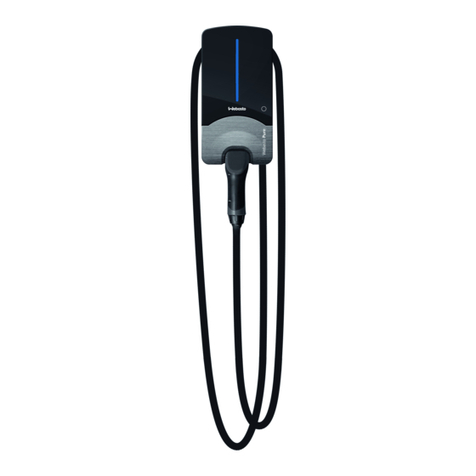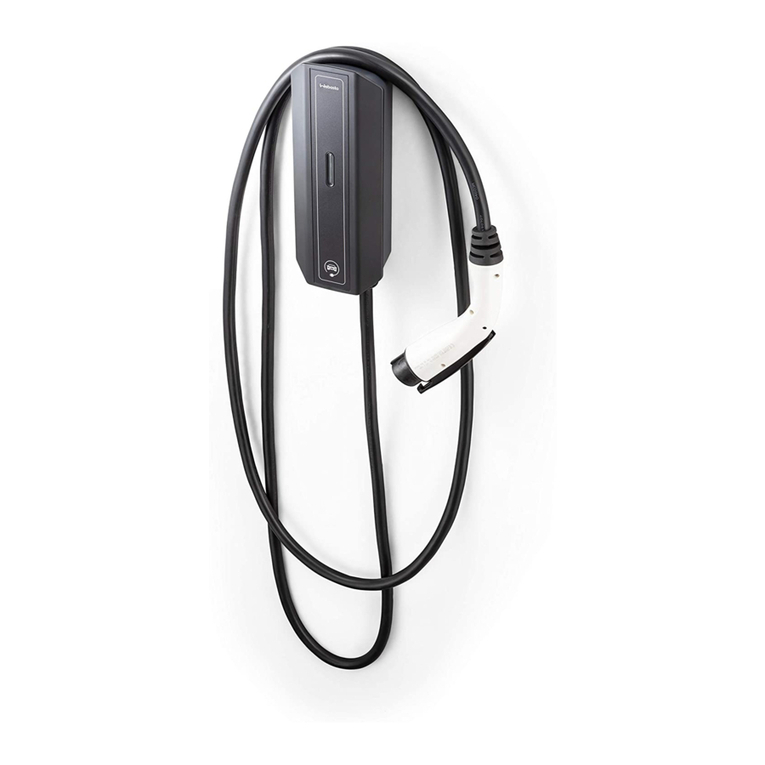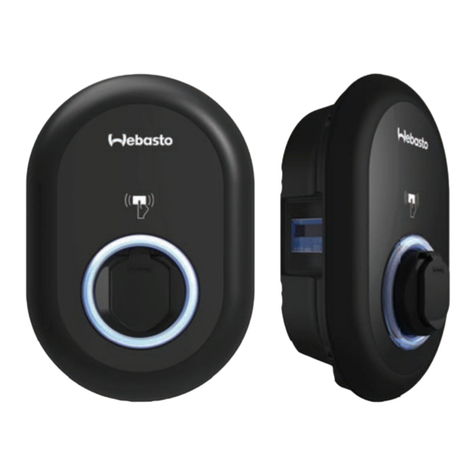
6 | Configuration menu
8 / 19 5110490B Configuration Instructions Webasto Live
6.2 Menu item: „Network“
6.2.1 Subitem „GSM”
The Webasto Live supports connection to the Webasto backend
or another OCPP backend.
A list of the supported backends can be found in the
data sheet of the Webasto Live. Detailed instructions on
how to connect external backends can be found in
„Changing Backend Webasto Live “ under the follow-
ing link:
Webasto Charging Download Portal.
uChoose the interface you will use to make a connection.
The recommendation for the Webasto backend with its con-
nectivity services is to set the mobile phone connection via the
GSM menu item and to use the SIM card previously installed at
the factory.
The Webasto Live comes as standard with a factory-fitted and
inactive SIM card that once activated is used for communicating
with the Webasto Connectivity Services. A different SIM card is
required to connect the Webasto Live to a different OCPP
backend, see chapter, "Overview" on page 4.
NOTE
Webasto recommends that the values specified in this
section be adjusted by the installer of the charging sta-
tion or on request by Support.
„Access Point Name (APN)“
The APN provides the network data, required by Webasto Live
in order to connect to your provider.
„Modem Access Technology“
The Webasto Live mobile modem enables communication via
2G (GPRS, Edge), 3G (HSDPA) and 4G (LTE) for transferring data
to a backend. When delivered, the charging station automatic-
ally chooses the best available network quality only if the SIM is
activated (this is done only when the Webasto Connectivity Ser-
vice is used). It may be necessary in locations where coverage
fluctuates strongly to specify the mobile telephone standard. To
establish the connection with a particular network operator,
enter this in manually under the "Requested Network Operator"
parameter and set the "Network Selection Mode" point to
"Manual".
6.2.2 Subitem "LAN"
The Webasto Live has an integrated RJ45 Ethernet port that is
used for being integrated into an existing tethered network or
to establish a charging station network.
„Mode for Ethernet configuration“
The Webasto Live LAN network interface can be used as a client
for an existing network or as a server to establish a new net-
work.
nSelect "Auto (DHCP client)" if you would like to integrate
the charging station into your home network.
nSelect "Manual config" to integrate it into an existing net-
work that requires a fixed assignment of parameters. Fill
the fields shown with the network parameters used in the
destination network accordingly.
nSelect "DHCP server" to set up a network that is self-man-
aged by the Webasto Live. The charging station assigns all
the necessary parameters to the devices that are also on
the network.
NOTE
If you select "DHCP server", all other charging stations
and devices in the "Auto (DHCP client)" network must
be configured, otherwise there may be an address con-
flict.
NOTE
Webasto recommends that communication between
the charging stations be carried out using an external
switch/router and via LAN cables when internal load
management is used. The IP addresses of the individual
charging stations should be configured manually so
that a unique assignment in the network is possible.
6.2.3 Subitem "WLAN"
The Webasto Live can also be integrated into an existing WLAN.
WLAN can also be used to network multiple Webasto Lives with
each other. The Webasto Live automatically selects the encryp-
tion process used for your network once the network password
has been entered.
NOTE
The Webasto Live WLAN module is not suitable for es-
tablishing a separate WLAN network or for strengthen-
ing (repeater) an existing network.
"WLAN SSID"
uEnter the name of the network you would like to connect
the Webasto Live to. Pay careful attention to the correct
spelling of the network name and the use of upper and
lower case.
„WLAN Password“
uEnter the password of the network you would like to con-
nect the Webasto Live to. Pay careful attention to the cor-
rect spelling of the network name and the use of upper and
lower case.
„Mode for WLAN configuration“
The WLAN interface of the Webasto Live can only be used as a
client for an existing network.
nSelect "Auto (DHCP client)" if you would like to integrate
the charging station into your home network. Your wireless
router automatically transfers the necessary settings to the
Webasto Live.
nSelect "Manual config" to integrate it into an existing net-
work that requires a fixed assignment of parameters. Fill
the fields shown with the network parameters used in the
destination network accordingly.
6.2.4 Subitem „Wifi Configuration Hotspot”
When delivered, the Webasto Live has an activated and encryp-
ted WLAN hotspot. This hotspot is only suitable for configuring
the Webasto Live and cannot be used to access the internet.
NOTE
Webasto recommends that you adjust the following
parameters of the configuration hotspot as the final
step in the initial startup.
NOTE
If the configuration menu is currently accessed through
the configuration hotspot, both the changes in the
parameters of the configuration menu and the changes
in the WLAN connection of the configuration PC must
be saved, otherwise the interface cannot be accessed.
u„Hotspot enabled“
This parameter can be used to deactivate the Webasto Live con-
figuration hotspot.
